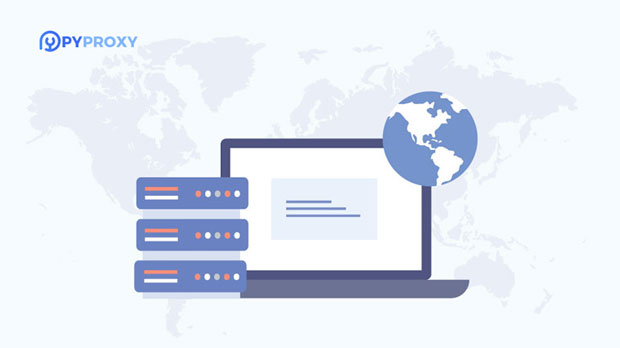The growing demand for online privacy, security, and data protection has led many users to explore various proxy services, with SOCKS5 standing out as one of the most reliable options. SOCKS5 is a versatile proxy protocol that promises high-level privacy, fast speeds, and the ability to bypass geo-restrictions. However, the question remains: Is a proxy server list using SOCKS5 suitable for long-term, stable use? This article explores the advantages, limitations, and factors influencing the long-term reliability of sock s5 proxies, providing valuable insights for those considering this solution for sustained online activities. What is SOCKS5 and Why is It Popular?SOCKS5 (Socket Secure 5) is an internet protocol used to route traffic between a client and a server via a proxy server. Unlike traditional HTTP or HTTPS proxies, which work by relaying specific types of web traffic (e.g., web pages), SOCKS5 supports all types of internet traffic, including email, FTP, torrents, and more. This flexibility makes it a favored choice for those seeking comprehensive privacy and anonymity.What distinguishes SOCKS5 from other proxy types is its support for both IPv4 and IPv6, its ability to handle UDP (User Datagram Protocol) and TCP (Transmission Control Protocol), and its lack of encryption. It’s designed to tunnel all kinds of internet traffic without altering the data, ensuring high-speed connectivity. The advantages of SOCKS5 proxies extend beyond versatility. They are also more secure than many other proxies because they do not require the client’s IP address to be transmitted in clear text. This reduces the chances of exposing the user’s identity and activity to third parties.Advantages of Using socks5 proxy Servers for Long-Term Use1. Enhanced Security and PrivacyOne of the most compelling reasons people use SOCKS5 proxies is their enhanced security. SOCKS5 allows users to hide their IP address and location, making it harder for websites and online services to track their online activities. This is particularly important for individuals who value privacy, as it prevents advertisers, hackers, and even government agencies from easily accessing their browsing habits.Moreover, SOCKS5 proxies are highly effective in bypassing geo-restrictions and censorship. Since they route internet traffic through a remote server, users can access content that might otherwise be unavailable in their region. This makes SOCKS5 ideal for long-term use, particularly for individuals in countries with heavy internet censorship.2. Speed and PerformanceUnlike traditional HTTP proxies, SOCKS5 proxies are designed to handle high-speed data transfers. They do not modify the data packets, which means they do not slow down the internet connection. This makes them suitable for high-bandwidth activities such as video streaming, online gaming, or large file downloads. For long-term users, this speed factor is crucial, as performance degradation can lead to frustration.3. Support for Various ApplicationsSOCKS5 proxies are application-agnostic, meaning they can support a wide variety of applications beyond just web browsing. Whether you’re using torrents, video streaming apps, or online gaming platforms, SOCKS5 proxies can handle it all without issue. This versatility ensures that the proxy remains valuable for a wide range of online activities, making it a strong candidate for long-term use.Challenges of Using socks5 proxy servers for Long-Term Use1. Lack of EncryptionOne of the main drawbacks of SOCKS5 proxies is the absence of encryption. While this may not pose a significant issue for some users, it means that data sent through a SOCKS5 proxy can potentially be intercepted by malicious actors if the user is on an unsecured network. Without the additional layer of encryption provided by VPNs, users may be at greater risk of having their sensitive information exposed. For long-term users, especially those handling sensitive data, this could become a vulnerability.To mitigate this issue, many users combine SOCKS5 proxies with encryption protocols (such as SSL or TLS) to ensure both speed and security. While this combination improves security, it may also reduce the overall speed of the connection, which could impact performance.2. Dependency on Proxy Server ProvidersThe reliability of SOCKS5 proxies depends heavily on the server provider. Not all proxy services offer high uptime, speed, and reliability. Some proxy servers may experience downtime, slow speeds, or unreliable connections, which can disrupt long-term usage. It's essential to research and choose a reputable provider to ensure consistent service.Additionally, some providers may limit the number of available SOCKS5 proxies or the overall bandwidth. Users may need to monitor and switch providers periodically to ensure the proxy list remains functional for the long term.3. Legal and Ethical ConcernsWhile SOCKS5 proxies can help bypass geo-restrictions and online censorship, they can also raise legal and ethical concerns. In some regions, using proxies to circumvent restrictions may violate local laws. It’s important for users to ensure they understand the legal implications of using SOCKS5 proxies, especially if they plan to engage in long-term activities that involve sensitive or potentially illegal actions, such as torrenting or accessing restricted content.Factors to Consider for Long-Term Stability with SOCKS5 Proxies1. Provider Reputation and Server QualityThe long-term success of using a SOCKS5 proxy server largely depends on the quality and reliability of the proxy provider. Opting for a well-established provider with high-quality servers will help ensure stable performance. Look for services that offer good customer support, robust security measures, and a high number of proxy servers.2. Combined Use with VPNsIf security is a concern, it’s often recommended to use SOCKS5 proxies in conjunction with a VPN. A VPN provides the necessary encryption to secure your data while retaining the speed benefits of SOCKS5. This combination offers a well-rounded solution for both privacy and performance, ensuring long-term, stable use.3. Monitoring Proxy HealthFor users who rely on SOCKS5 proxies for extended periods, monitoring proxy health is crucial. Ensure that you regularly check server performance, connection speeds, and uptime. A stable proxy list with well-maintained servers is essential for uninterrupted service.In conclusion, SOCKS5 proxies can be a suitable solution for long-term, stable use if selected and managed properly. They offer significant benefits in terms of privacy, speed, and versatility, making them ideal for various online activities. However, users must be mindful of the challenges, such as lack of encryption and dependency on server providers, which could impact long-term stability. By choosing reputable providers, monitoring server performance, and combining SOCKS5 with additional security protocols, users can enjoy the advantages of SOCKS5 proxies without compromising on performance or security.
Sep 19, 2025



































































